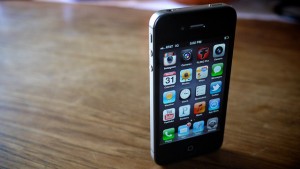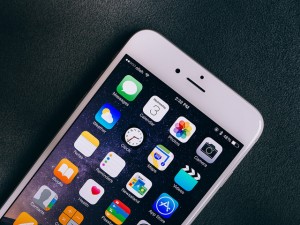Mobile ad spending is skyrocketing around the world. This year mobile ad spending in the United States is expected to increase an astounding 50% and account for essentially half of all digital ad spending (eMarketer). By 2019 this number is expected to continue to grow to nearly three quarters of all digital ad spending.
 Mobile marketing is an entirely new medium where some new rules apply.
Mobile marketing is an entirely new medium where some new rules apply.
Whether you are planning on building a mobile web site, mobile application development or a mobile marketing program, to make sure you get the most from your mobile marketing make sure you follow these 4 tips.
Viewability
Your business cannot rely on outdated metrics like clicks or impressions. You want to make sure your ad is seen. Make sure you place ads where consumers will see them. Viewability is more of a watchword than ever before for good reason.
Relevance
Reach your customers with a relevant message. Make sure that consumers find value in your message, ask your self if the app on which you are advertising make sense for your message. Don’t focus on what is cool, rather focus on what is relevant. Businesses can spend a lot of time and money on a big campaign on the hippest app to only lose out due to a lake of relevance with the audience. You need to picture yourself as one of the apps users and determine if your message is relevant and will resonate with the users.
Personalize
Mobile devices are very personal which is part of the reason that mobile ads are so effective. Personalize your message and users generally pay more attention (personalized push notifications, etc) than they do to banner ads.
Timing
Pay attention to the timing of your messaging. Consider your customers and their habits. If you can deliver the right offer at the right time with the right message you will hit pay dirt. Timing can be as important as location and relevance in improving the effectiveness of your messaging.
Photo: Matthew Pearce (Flikr) http://bit.ly/1EbmZc1
When it comes advertising, context is king.
Simply having a bunch of people see your advertising is no longer good enough; your message now can, and should, be sent to reach the right people in the right place. Your ad impressions will mean something in the eyes of the right audience.
 Fortunately with the growth of mobile, this is easier than ever before with Geo-targeting. Mobile and geo-targeting allow you to deliver personalized content at the precise moment the user might need it, while they are at a location that presents an opportunity for them to do so.
Fortunately with the growth of mobile, this is easier than ever before with Geo-targeting. Mobile and geo-targeting allow you to deliver personalized content at the precise moment the user might need it, while they are at a location that presents an opportunity for them to do so.
There are many ways to set up location based marketing programs. From the device’s own GPS to exciting opportunities with Augmented Reality the sky really is the limit right now for clever marketers. Add to this the opportunities to leverage near field communication or beacons and some incredibly powerful marketing opportunities exist.
One of the more clever location based marketing programs has come from Guatemala, where sneaker store Meat Pack has released a discount finding app called Hijack. Hijack will basically start a sale for a customer when they enter in a competing outlet. So if you were to enter a sneaker store in the same mall as Meat Pack, Hijack would send you a discount for sneakers of the same brand. The discount then goes down one percent per second so the faster you can get to Meat Pack to redeem the offer, the more you save. Meat Pack reported that more than 600 customers redeemed offers within a week.
On the other hand, Chrysler saw poor results when delivering ads near competitor’s locations. Purchases that require extensive research such as a new auto are different than impulse buys like shoes and marketing must be done differently. You will need to evaluate your business and competition to see what is best for you. Experienced mobile application developers can help, but be sure to take a good look at your product and customers before implementing a location based marketing program.
Chrysler saw success delivering messaging on their own lots. In fact, mobile has been so successful for Chrysler that 45 percent of the brand’s traffic now comes from mobile.
Keep in mind that offers don’t need to be targeted quite so precisely to be effective. Research has shown that ads delivered with a 2-5 mile radius of a business is optimum for performance. Meanwhile ads delivered 6 or more miles away saw rapidly reducing effectiveness, which just points to the power of location based marketing.
Photo: Vincent Lee (Flikr) http://bit.ly/1dsk3SM
It is clear that mobile will continue to grow throughout 2015 and beyond. Study after study details a bright future for mobile, such as when research firm eMarketer anticipated mobile to surpass desktop in search ad dollars this year.
 We are seeing smartphones transform several aspects of our life that you may not have considered. From how we access information to how we shop, mobile is transforming the modern world.
We are seeing smartphones transform several aspects of our life that you may not have considered. From how we access information to how we shop, mobile is transforming the modern world.
We are well past the point of mobile being just for early adopters. Mobile is a fantastic medium for all businesses due to the broad demographic of users it reaches. While many think of millennials when it comes to mobile, fact of the matter is that a quarter of the mobile shoppers are in fact over 55 (comScore).
Mobile devices are where your consumers are at, but how do you get the most from you companies mobile offerings?
Personalization
Making your mobile application or web site more personal to your users can pay huge dividends. Customers have come to expect offers to be tailored to their preferences. Data-driven, personalized marketing is the future and there is no reason your business isn’t taking advantage of it now given the power of mobile devices.
The modern consumer has learned to personalize their device and their mobile experience. Brands that allow for personalization build brand loyalty and reap the rewards of catering to the needs of modern consumers. Personalization helps create user experiences that are more impactful, which translates into sales. With mobile, businesses are able to deliver offers and information based on a user’s location, interests and preferences. Additionally, as users are able to personalize their experience on your mobile offerings it creates a “buy-in” that invests them more into the experience and helps continue use.
Data enables retailers to personalize experiences and drive sales and should be planned for in the early stages of your mobile application development project. An iPhone application developer or Android application developer can discuss information architecture with you and plan ahead for your needs.
User Experience
Modern application design is all about a focus on the user and their needs. No longer are consumers willing to accept difficult to use sites and apps and instead they will opt for retailers that create the experiences they are looking for. Applications will be abandoned quickly if they are not intuitive to users
Key to understanding user experiences is understanding trends in the industry and commonly accepted ways of doing things. Fight against the generally accepted way to accomplish simple tasks and risk your apps being abandoned due to being confusing. Mobile users are picky and won’t waste time figuring out complicated operations.
Seamless Experiences
Consumers are more sophisticated than ever and expect businesses to create the seamless digital experiences that are consistent with a brand’s in-store experience and equally engaging. Studies indicate that 86 percent of senior level marketers say it’s important to create a cohesive journey across all touch points for consumers. This is for good reason as many consumers will check out a product in store and buy it later via mobile app or website.
Businesses can’t rely on a single touch point any more as customers may not go into a location or to a business’s web site to make a purchase. You need to make sure you put the tools consumers need in their hands.
Photo: CAFNR (Flikr) http://bit.ly/1KoT2KQ